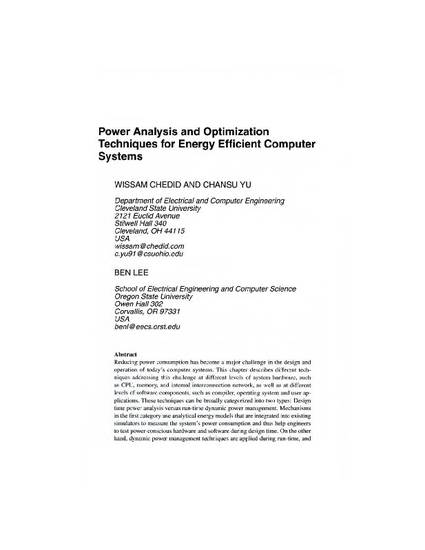
Reducing power consumption has become a major challenge in the design and operation of to-day’s computer systems. This chapter describes different techniques addressing this challenge at different levels of system hardware, such as CPU, memory, and internal interconnection network, as well as at different levels of software components, such as compiler, operating system and user applications. These techniques can be broadly categorized into two types: Design time power analysis versus run-time dynamic power management. Mechanisms in the first category use ana-lytical energy models that are integrated into existing simulators to measure the system’s power consumption and thus help engineers to test power-conscious hardware and software during de-sign time. On the other hand, dynamic power management techniques are applied during run-time, and are used to monitor system workload and adapt the system’s behavior dynamically to save energy.
